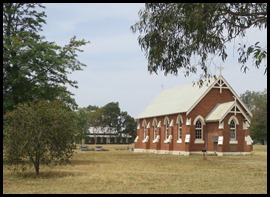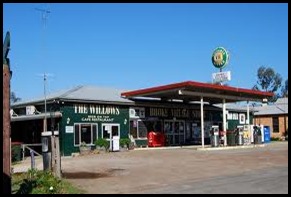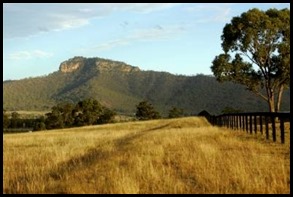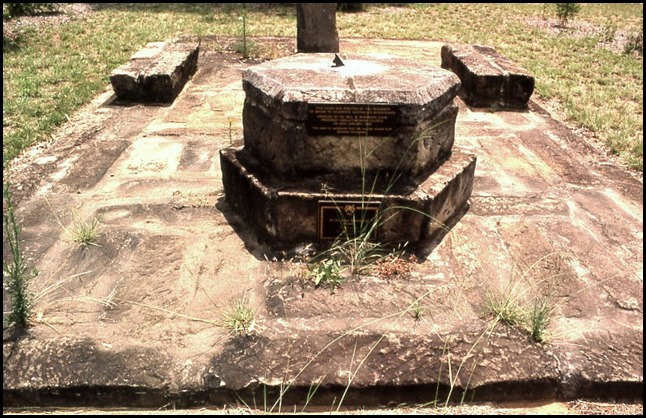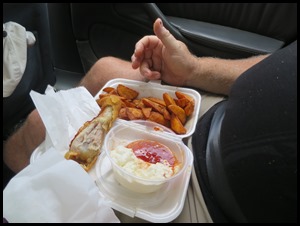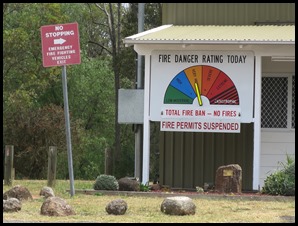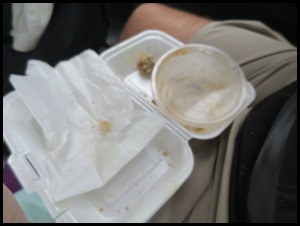Broke

|
Broke
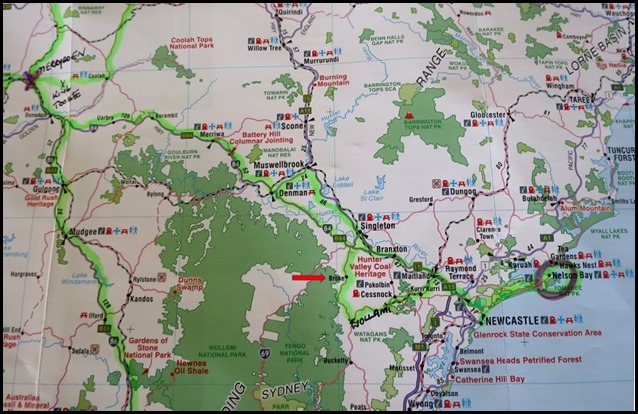 Our
next stop en route from Nelsons Bay to Merrygoen was to pick up an ‘on the go
lunch’ from Broke – red arrow.
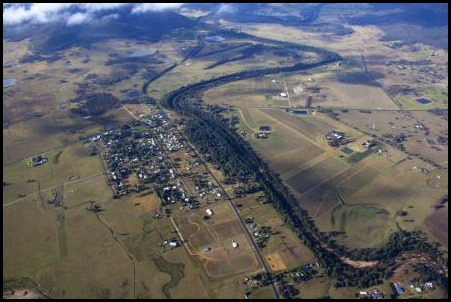 An aerial shot of Broke looking south.
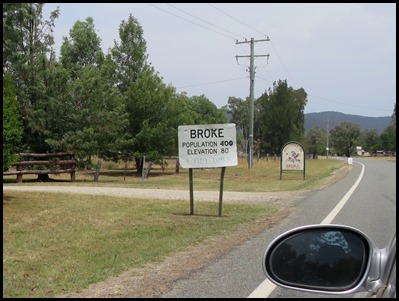 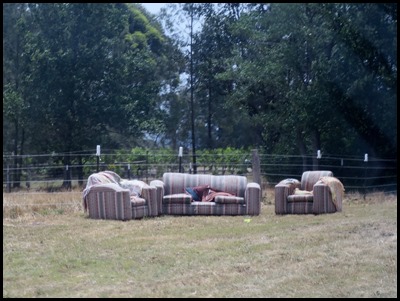 Broke is a village of approximately four hundred people in
the Hunter
Region of New South
Wales, in Singleton
Shire. It is located ninety eight miles to the north of
Sydney on the original
early colonial road from Sydney to Singleton fifteen miles
north. Don’t ask about the three piece suite on the side of
the road, we didn’t.
Description: The Broke area is well known for its boutique wine production and is usually referred to as the 'Broke-Fordwich' wine region (a sub-region to the more famous Pokolbin area nearby). The village also holds an annual fair in September. Broke has a primary school, The Immaculate Conception Catholic Church, an Anglican church and a service station with store and post office. The brick house on the south side of the store is the former police station and lock-up. The south side of Broke provides views across properties to the Broken Back Range, the most conspicuous feature of which is the sandstone formation known as Yellow Rock.
History: Explorers first reached the Broke area in 1818 and land grants followed in 1824. John Blaxland received a grant because he had found a route to the Hunter Valley, while grants also went to George Blaxland and Robert Rodd. The village was given its name by Major Thomas Mitchell, the Surveyor General, who used the name of his English friend Sir Charles Broke-Vere. John Blaxland had built a mill at the nearby Fordwich by 1860. Six years later, Broke had an Anglican Church, a farm implements workshop and a school. The Great North Road was completed and became the main stock route to Sydney; since it passed through Broke, it contributed to further growth of the village, with something like a thousand head of cattle using the route each week. This amount of activity meant that by the late 1800’s Broke had several hotels, a post office, a school, a mill, two churches, a hall, a brick kiln, a butchery, bakery and blacksmith. However, it was not to last. The railways eventually replaced the Great North Road as the main route between Sydney and the Hunter, which meant a drastic drop in traffic through Broke. A railway service between Wollombi and Singleton was proposed but never constructed. Broke reverted to being the quiet village it had originally been. However, a number of significant buildings have survived from the early days. They include the original post office (1882), the village hall (1898), public school (1876), Anglican Church and Catholic Church, the old police station and the remains of the Blaxland Homestead on Broke Road.
Food gathered from the shop, we set off once more. My sandwich looked a poor excuse for lunch compared to Bears feast. No sooner than I saw the fire risk monitor read ‘very high’, than food gone and lips were being wiped.
A few minutes after leaving the village we saw a substantial open-cut - and underground, coal mining operation ran by Bulga Coal.
ALL IN ALL A NICE LITTLE STOP WEIRD NAMED BUT INTERESTING
. |
